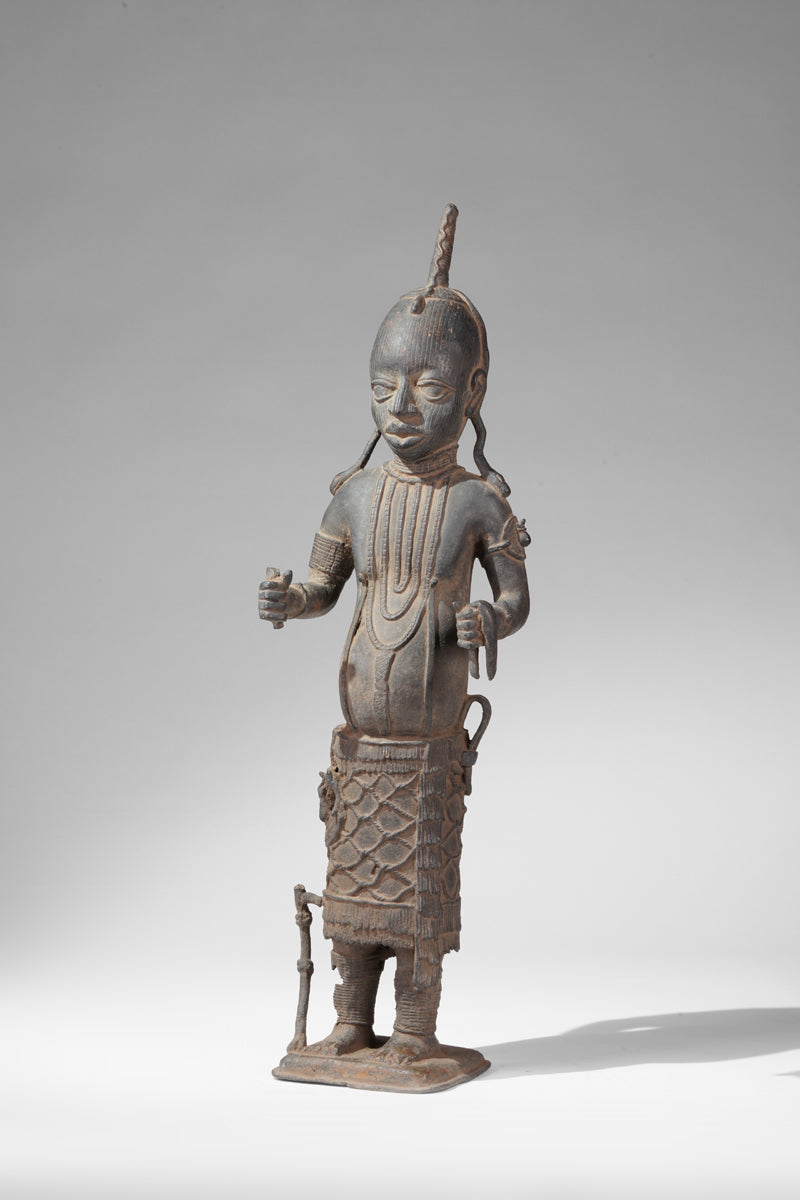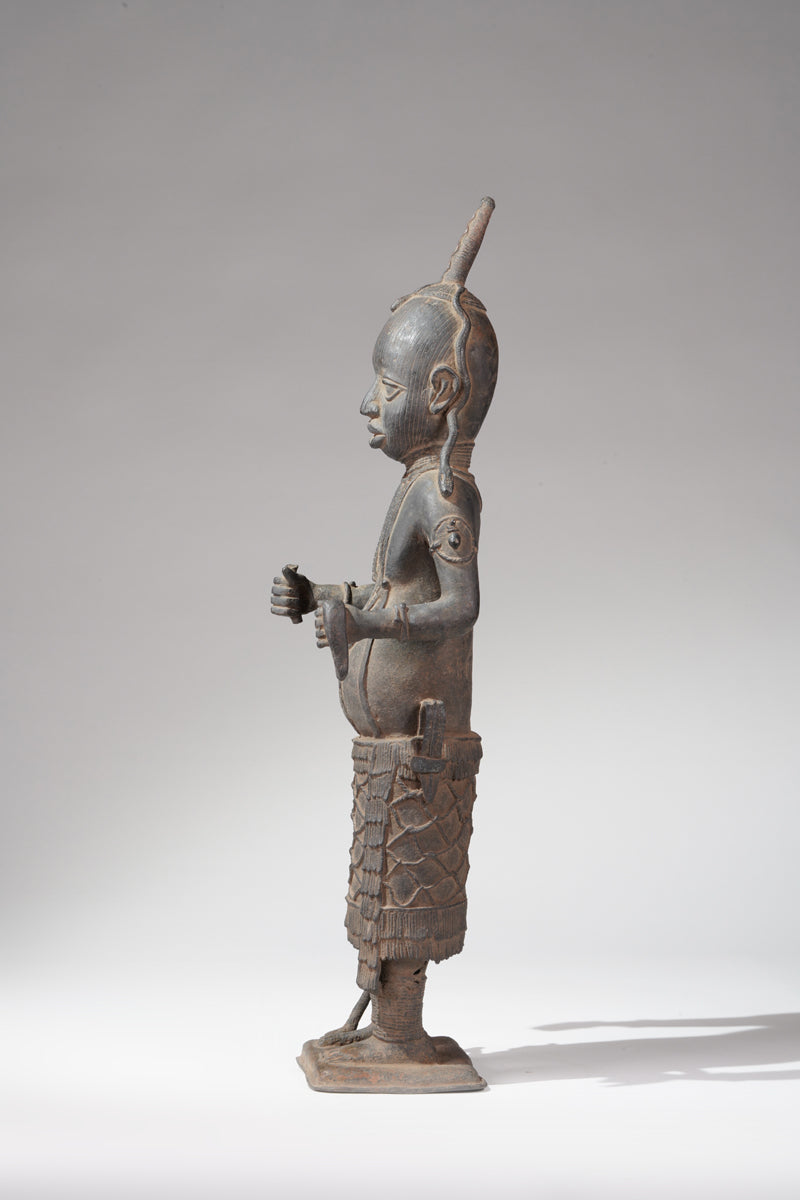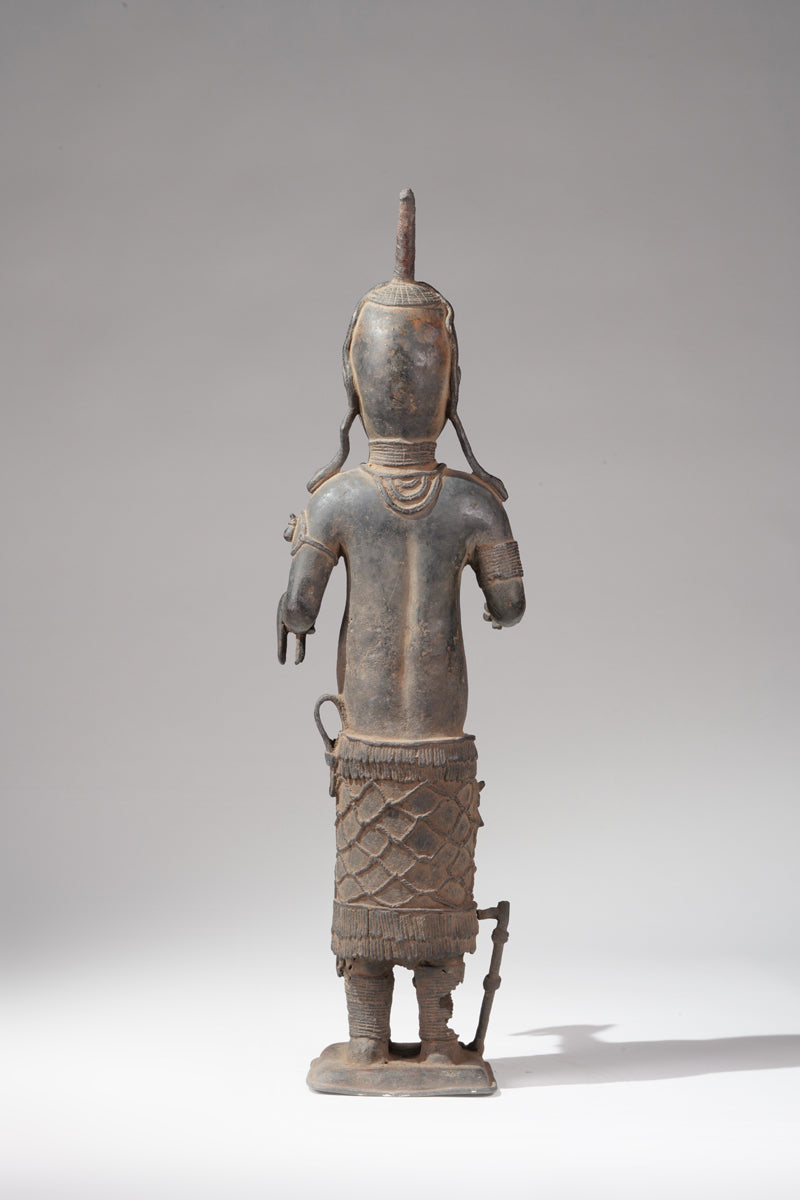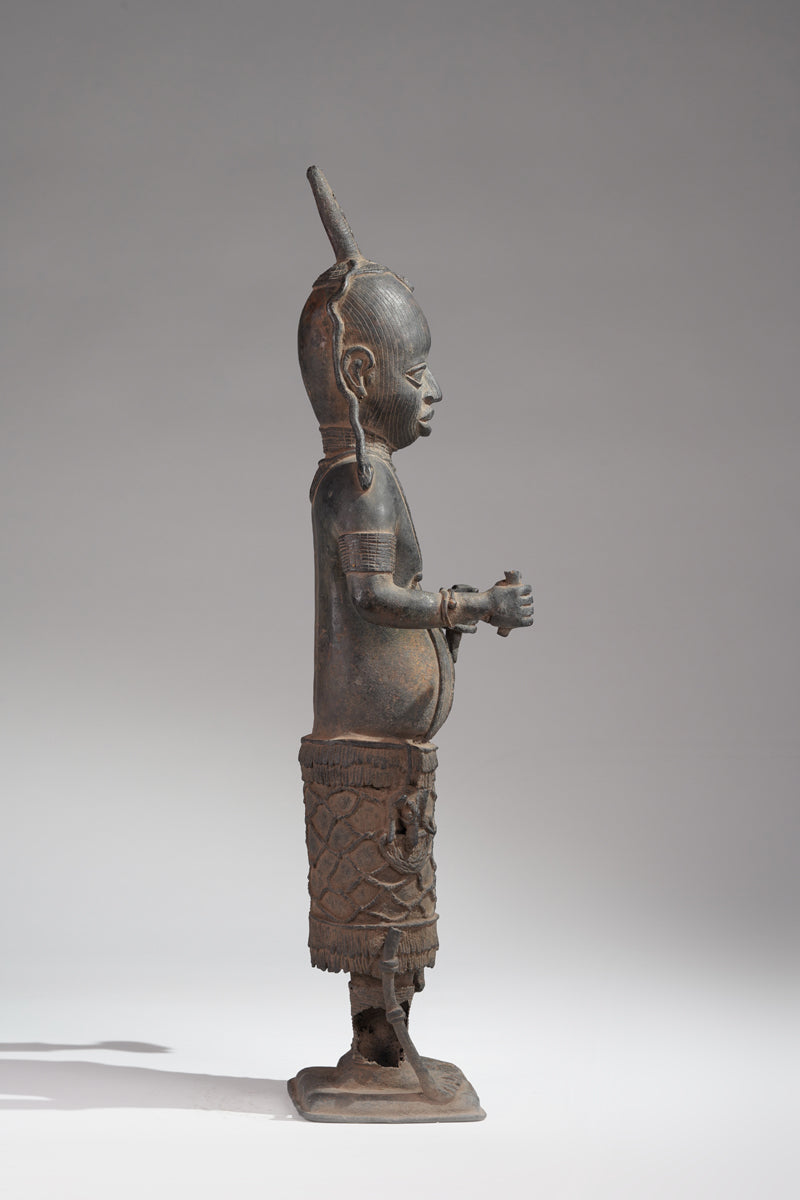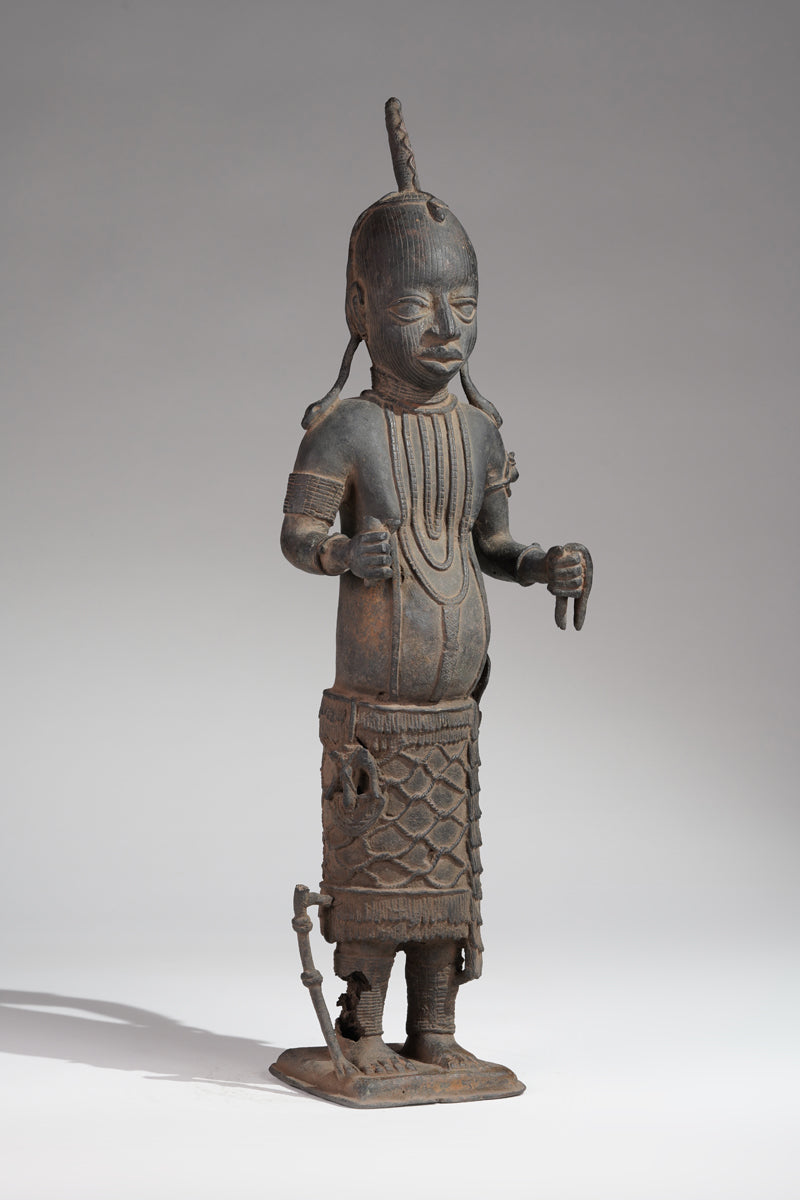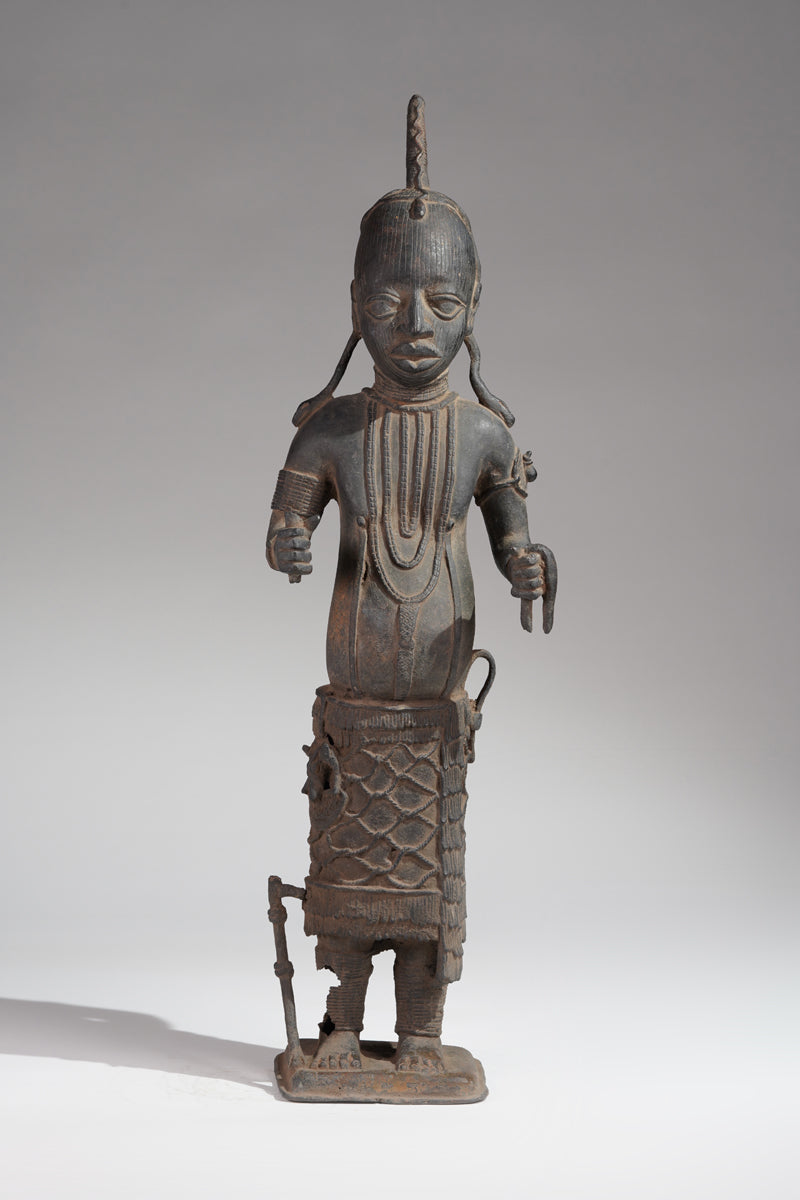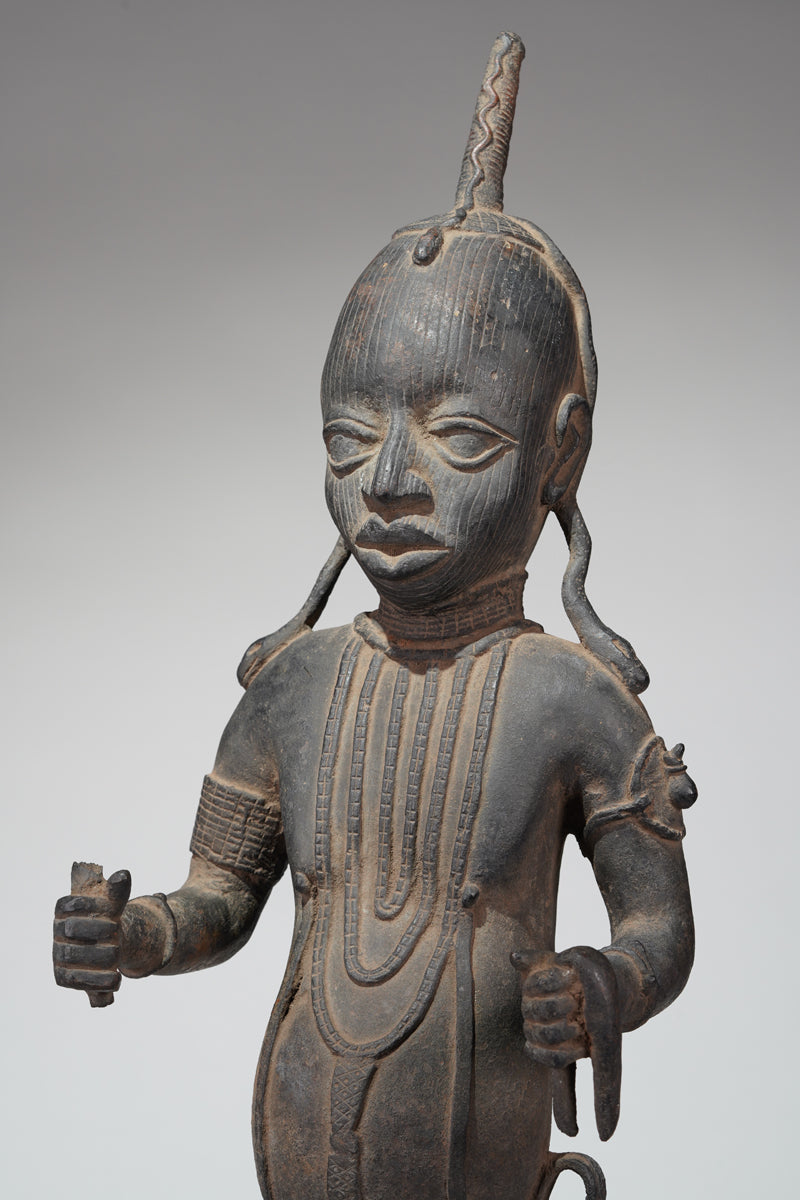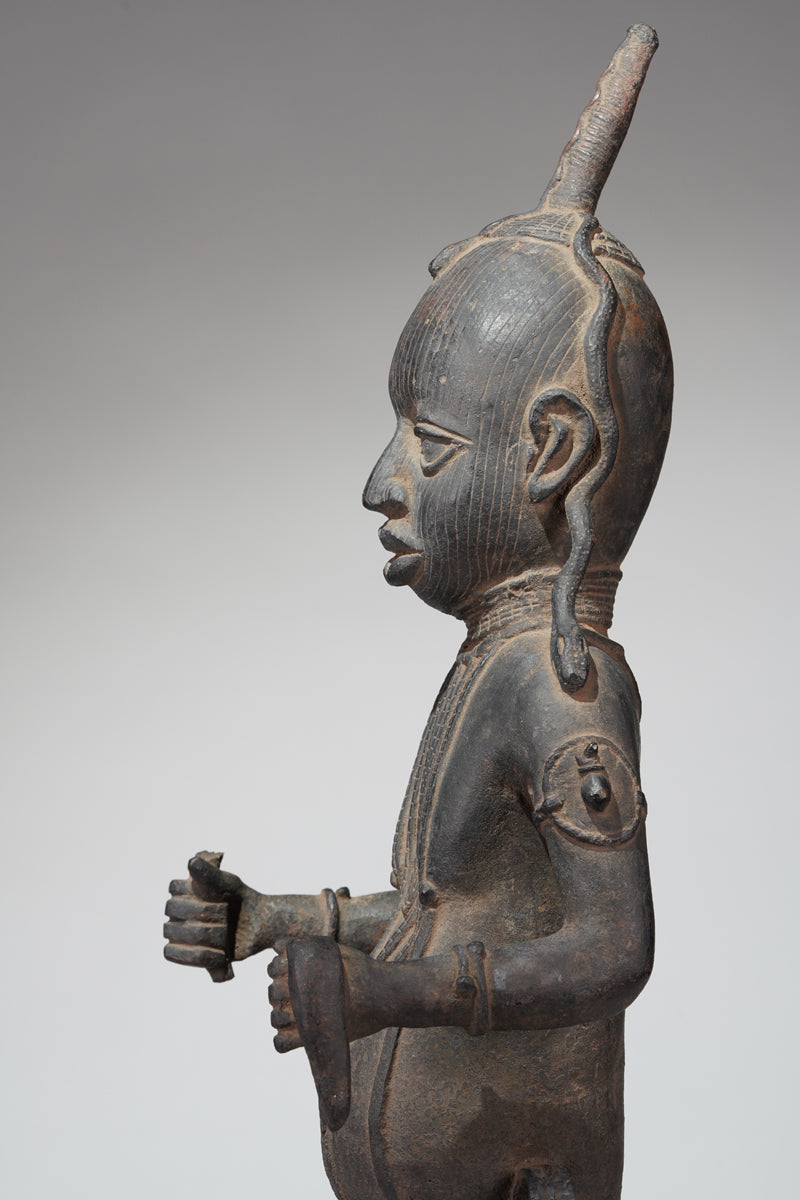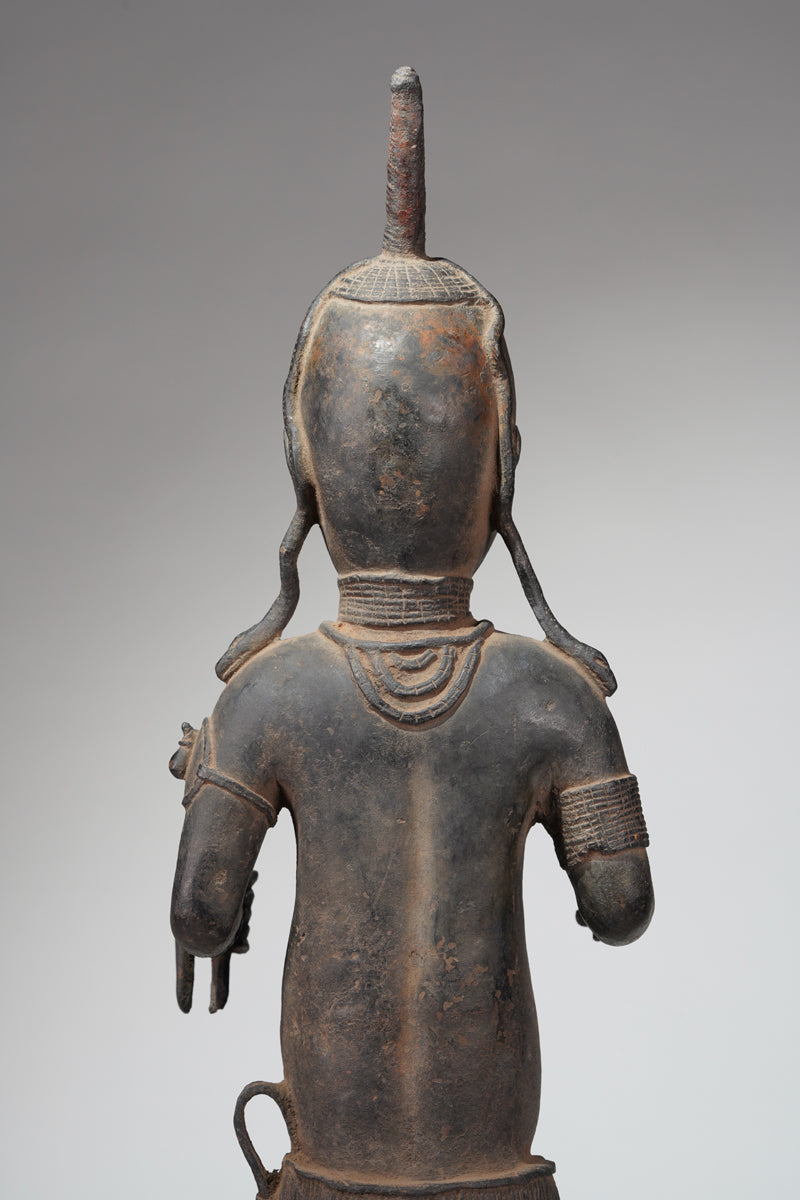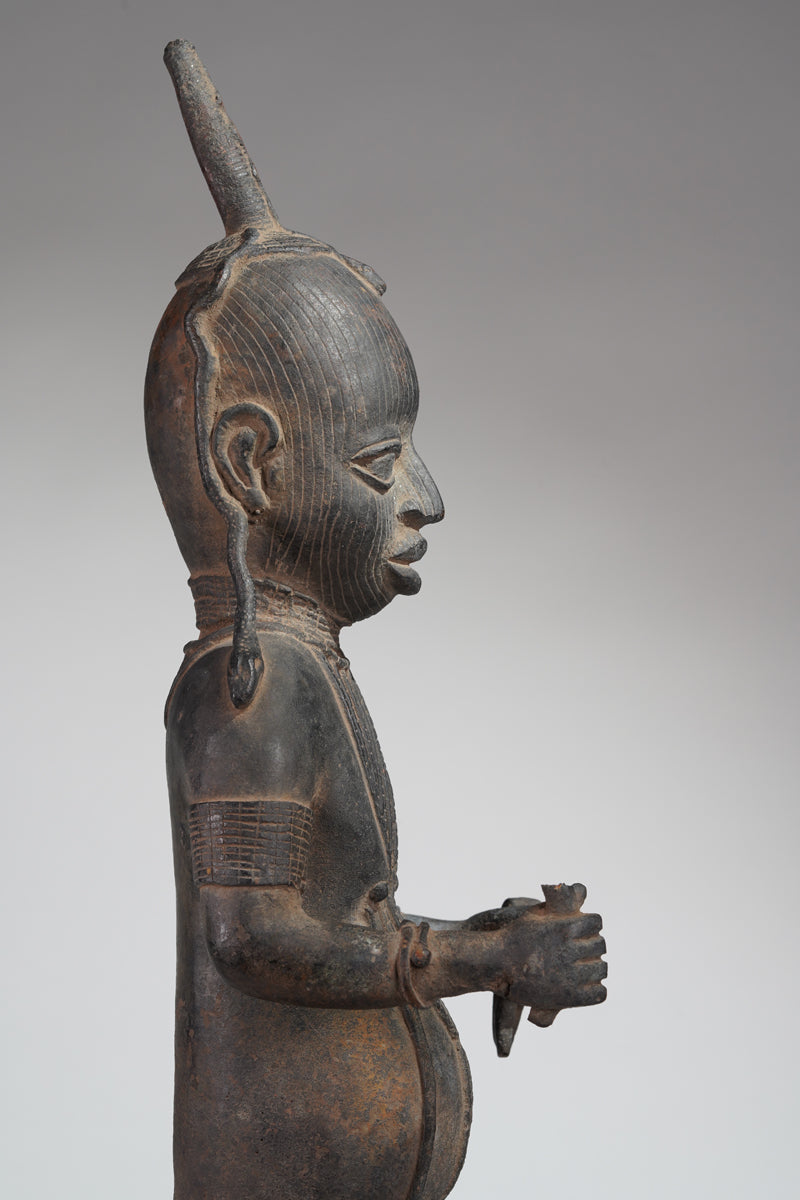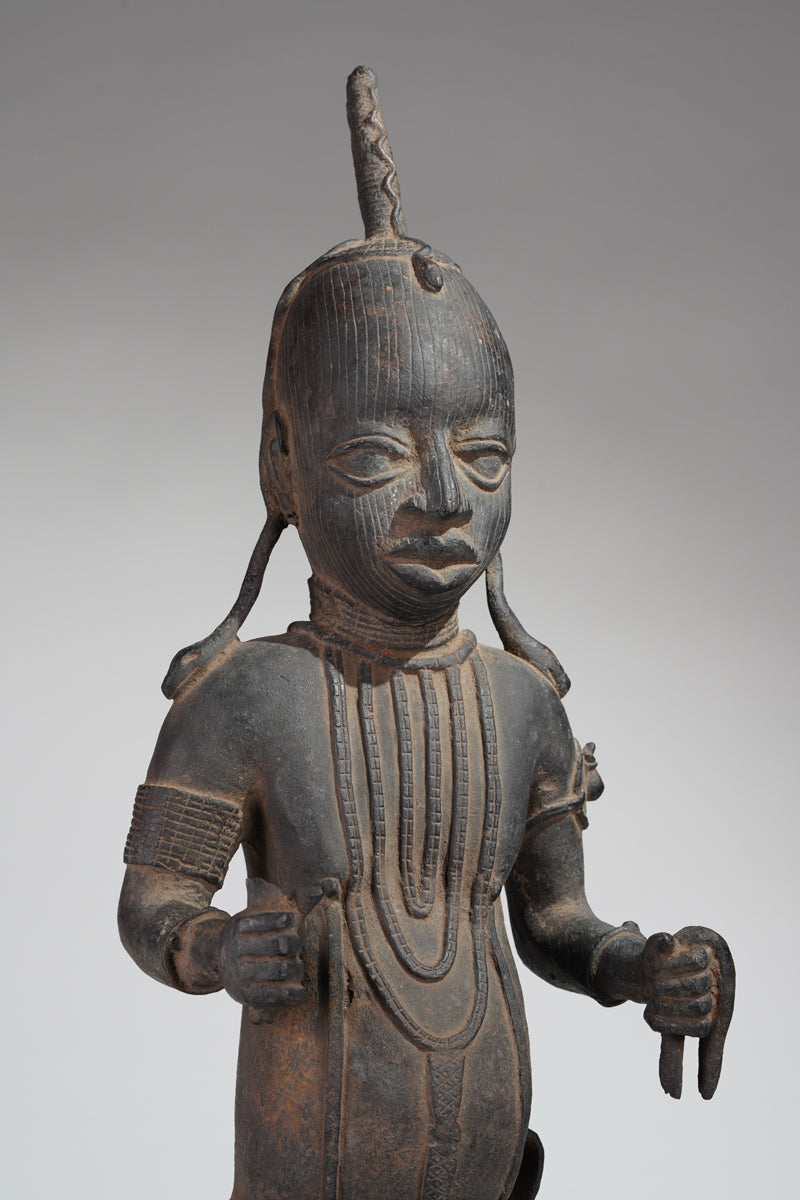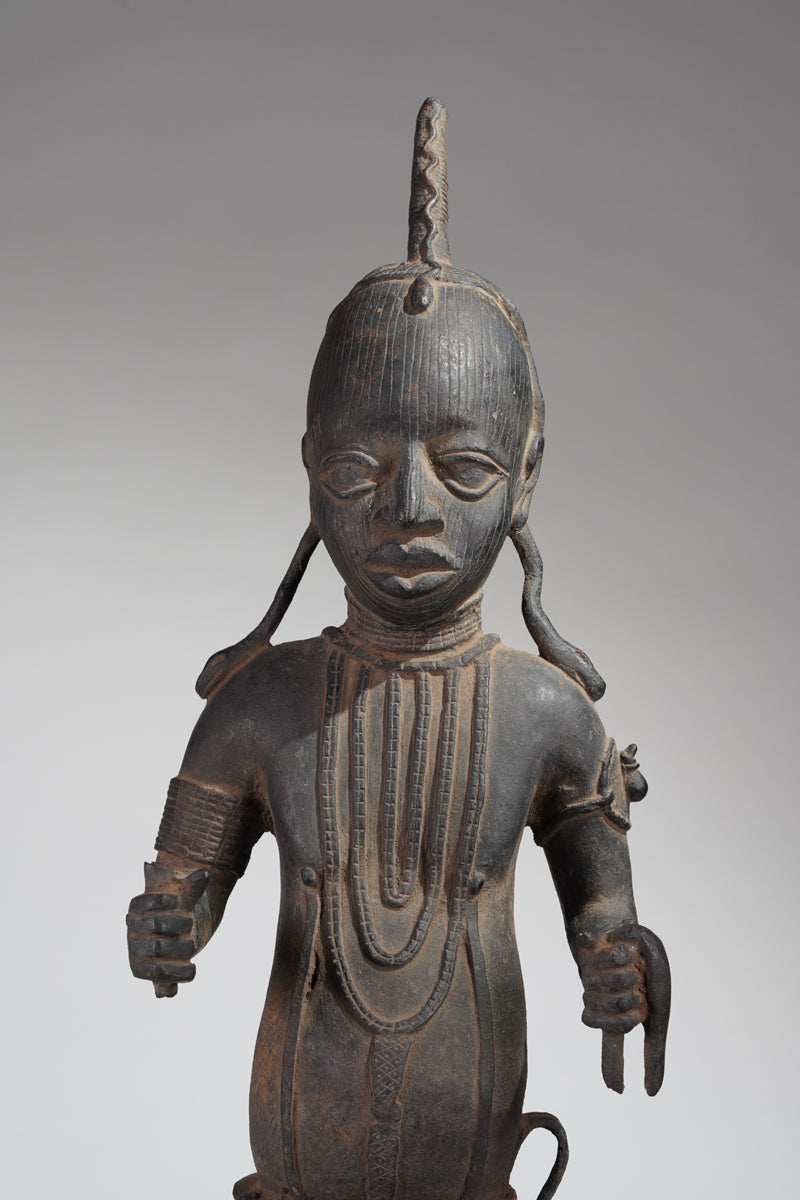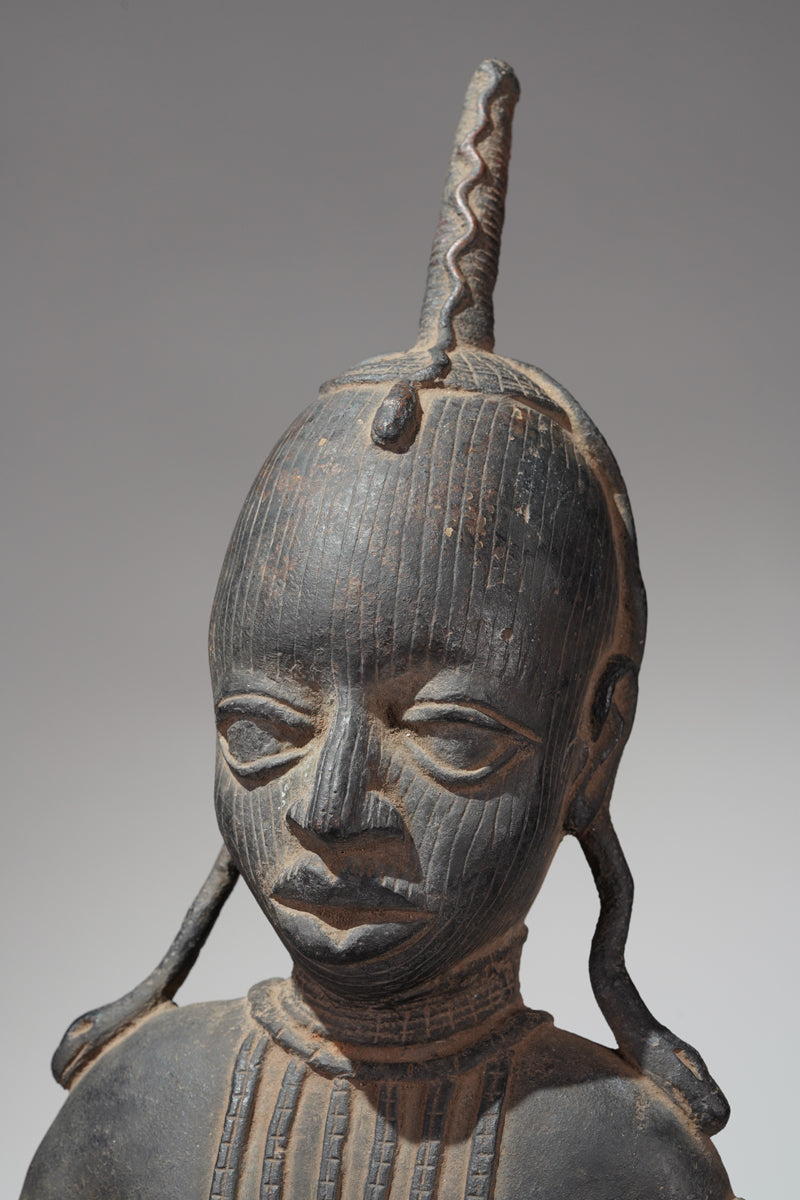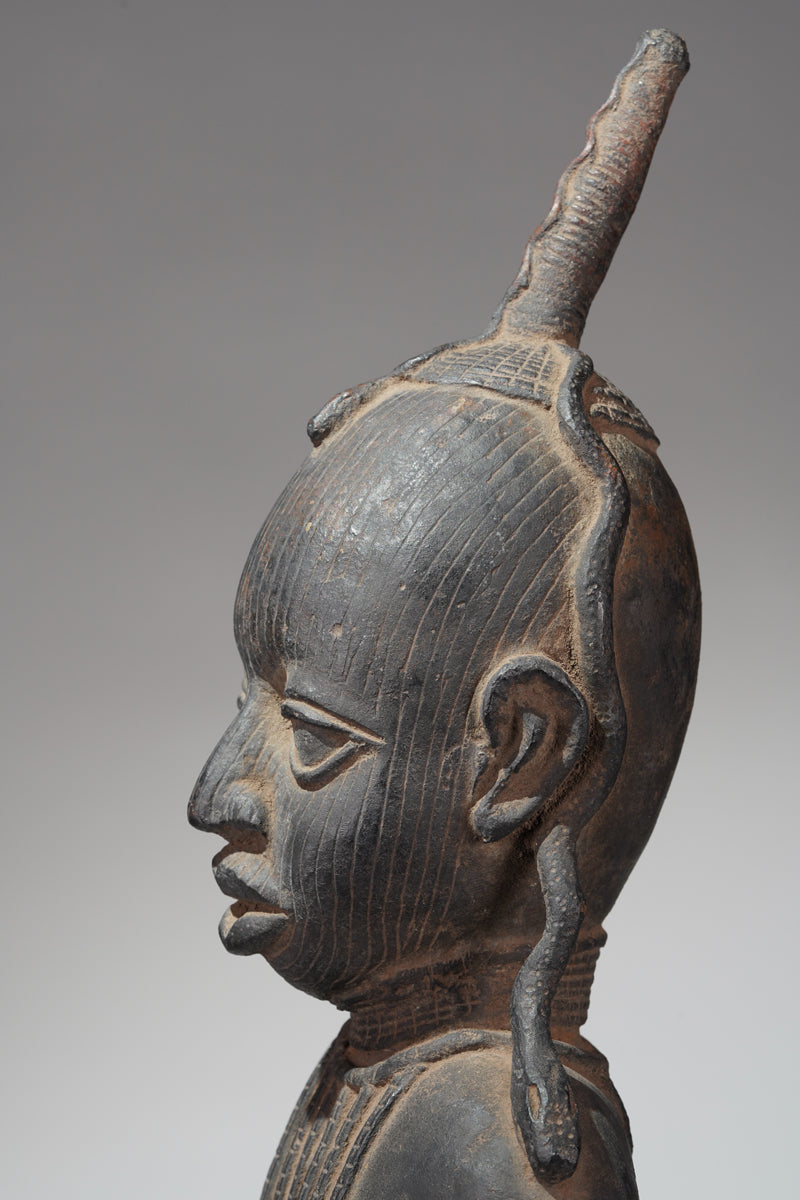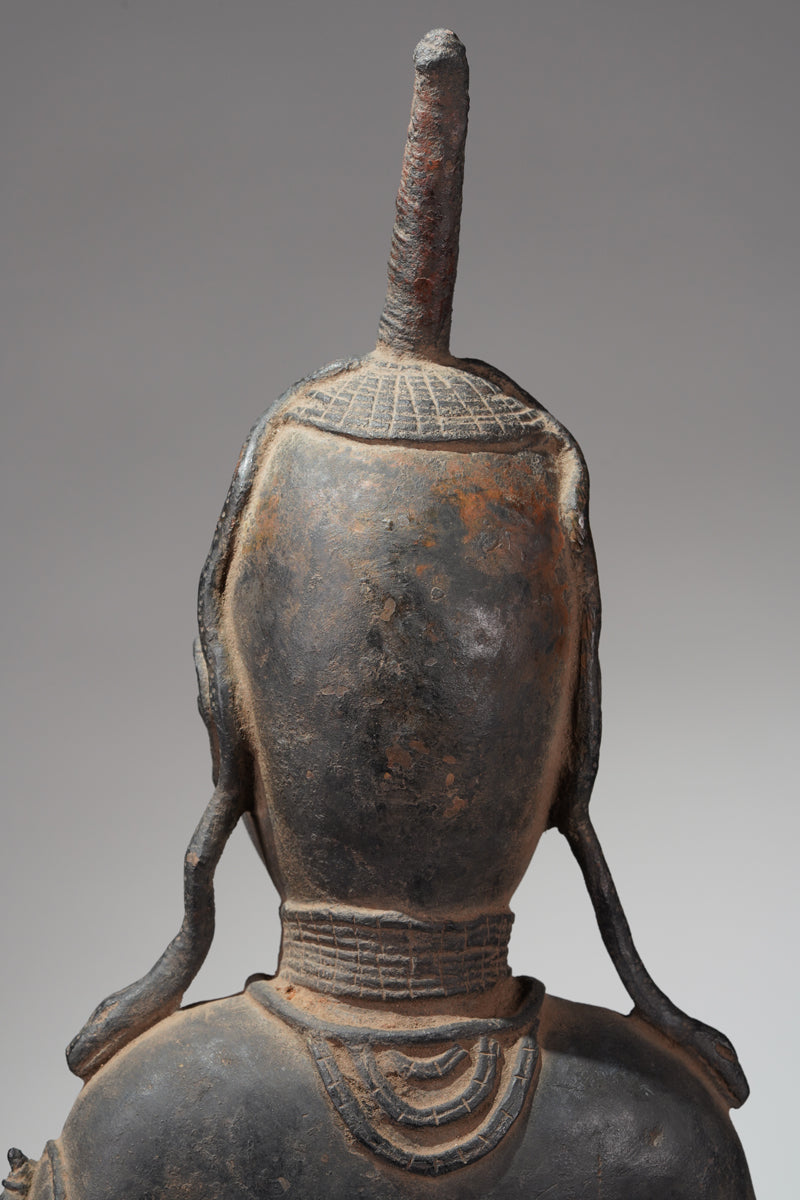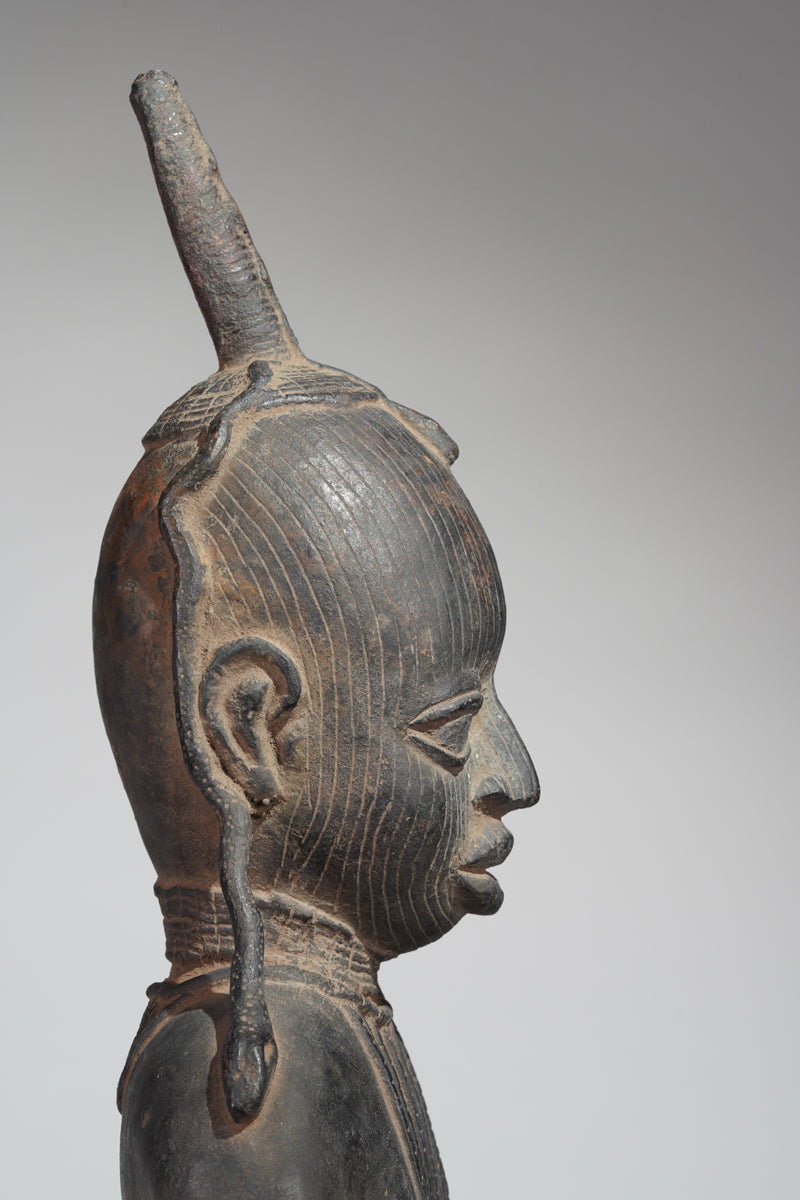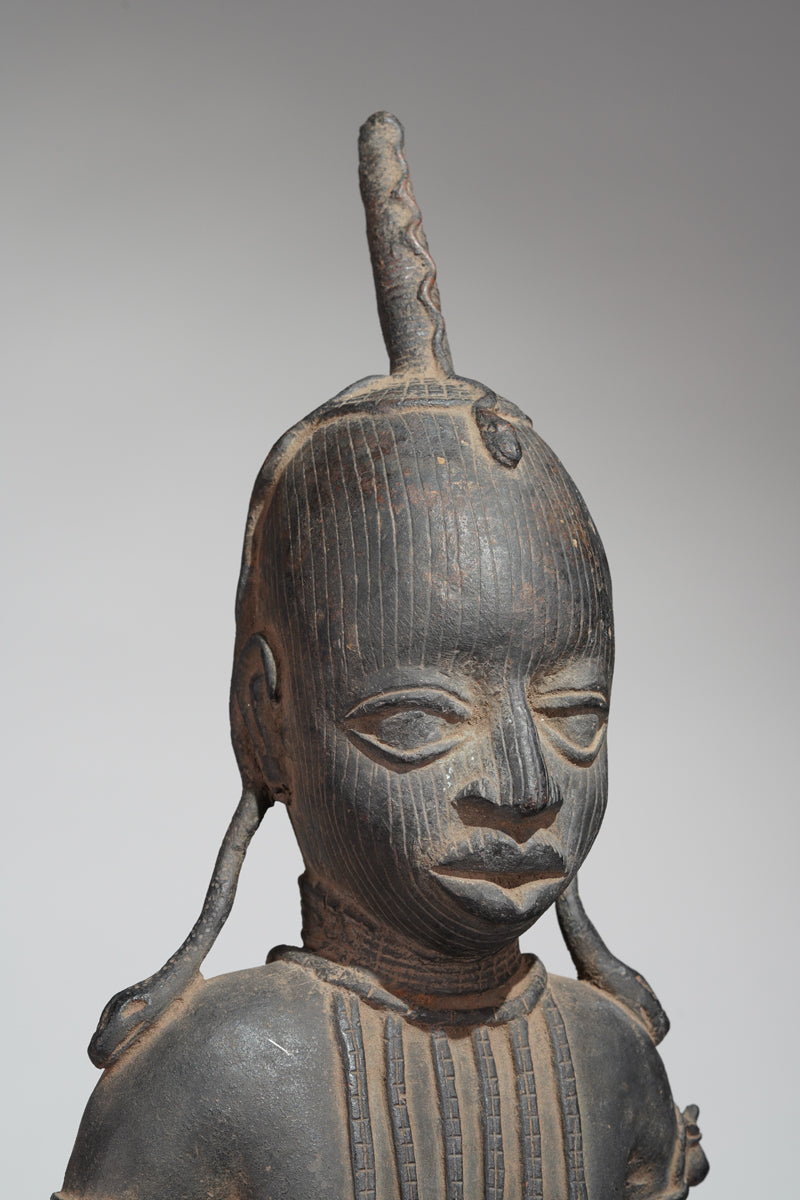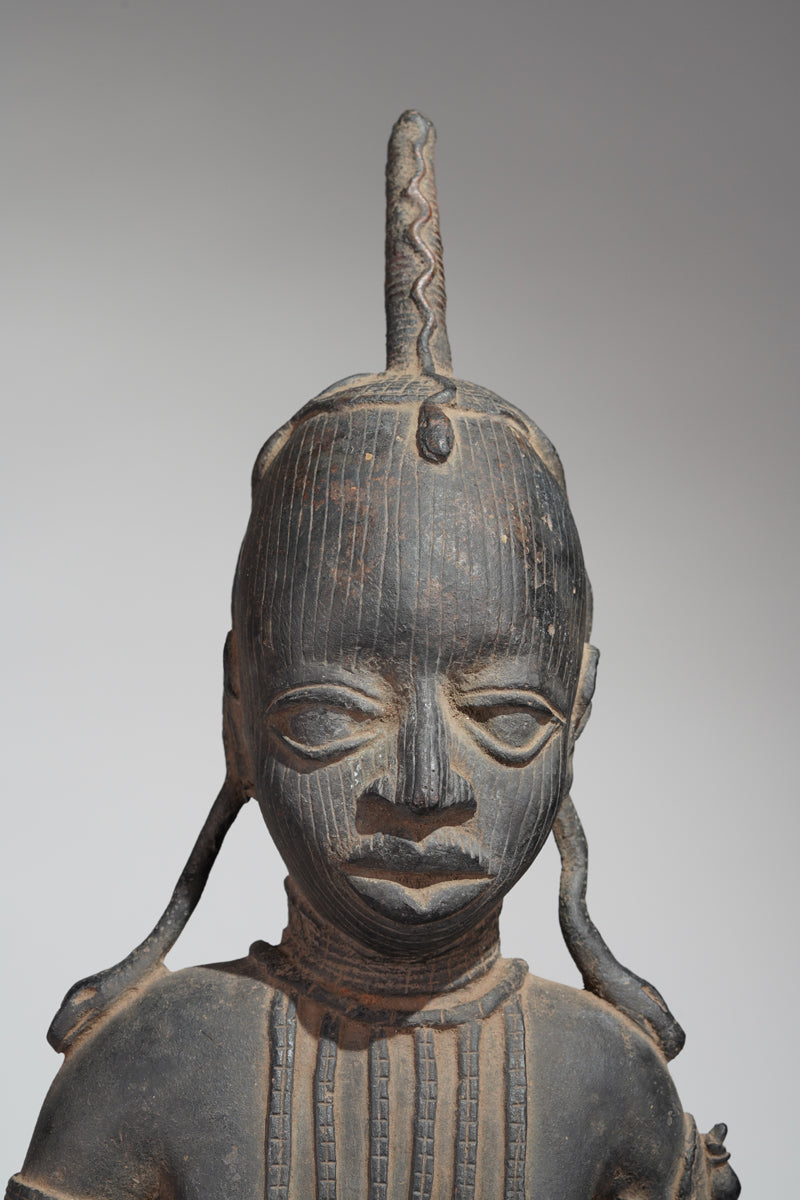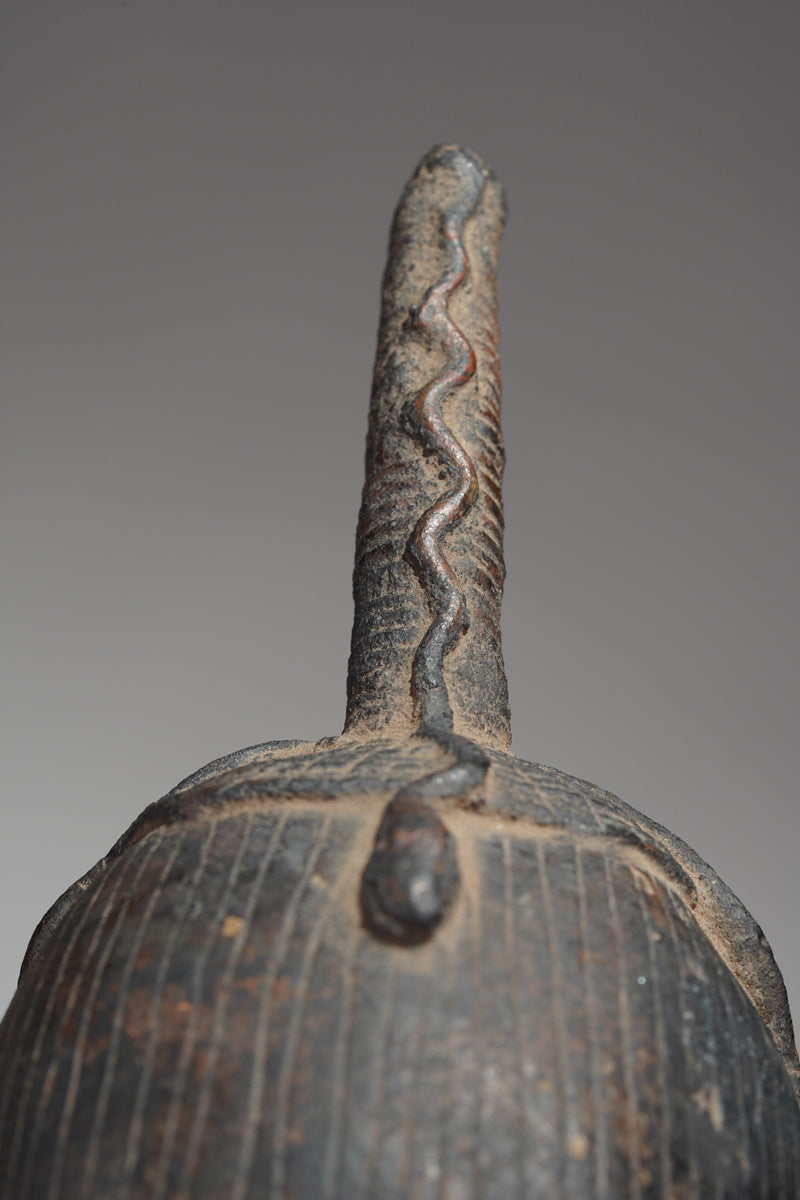wolfgang-jaenicke
A framentary female sculpture
A framentary female sculpture
Couldn't load pickup availability
A framentary female sculpture in the "Udo style" of Ife.
The so-called Udo style represents a regional and stylistic variant within the artistic traditions of the Benin Kingdom and is named after the town of Udo near Benin City. This style is characterized by a less rigid and formalistic approach compared to classical Benin bronze art. Instead, the Udo style emphasizes more expressive and naturalistic elements, which may indicate either an earlier developmental phase or a distinct local tradition within the Benin artistic system.
Benin art, renowned for its bronze plaques, ivory carvings, and royal figurative representations, typically follows a highly hierarchical and stylized formal system. It developed between the 14th and 19th centuries and primarily served to represent courtly power, religious rituals, and social order.
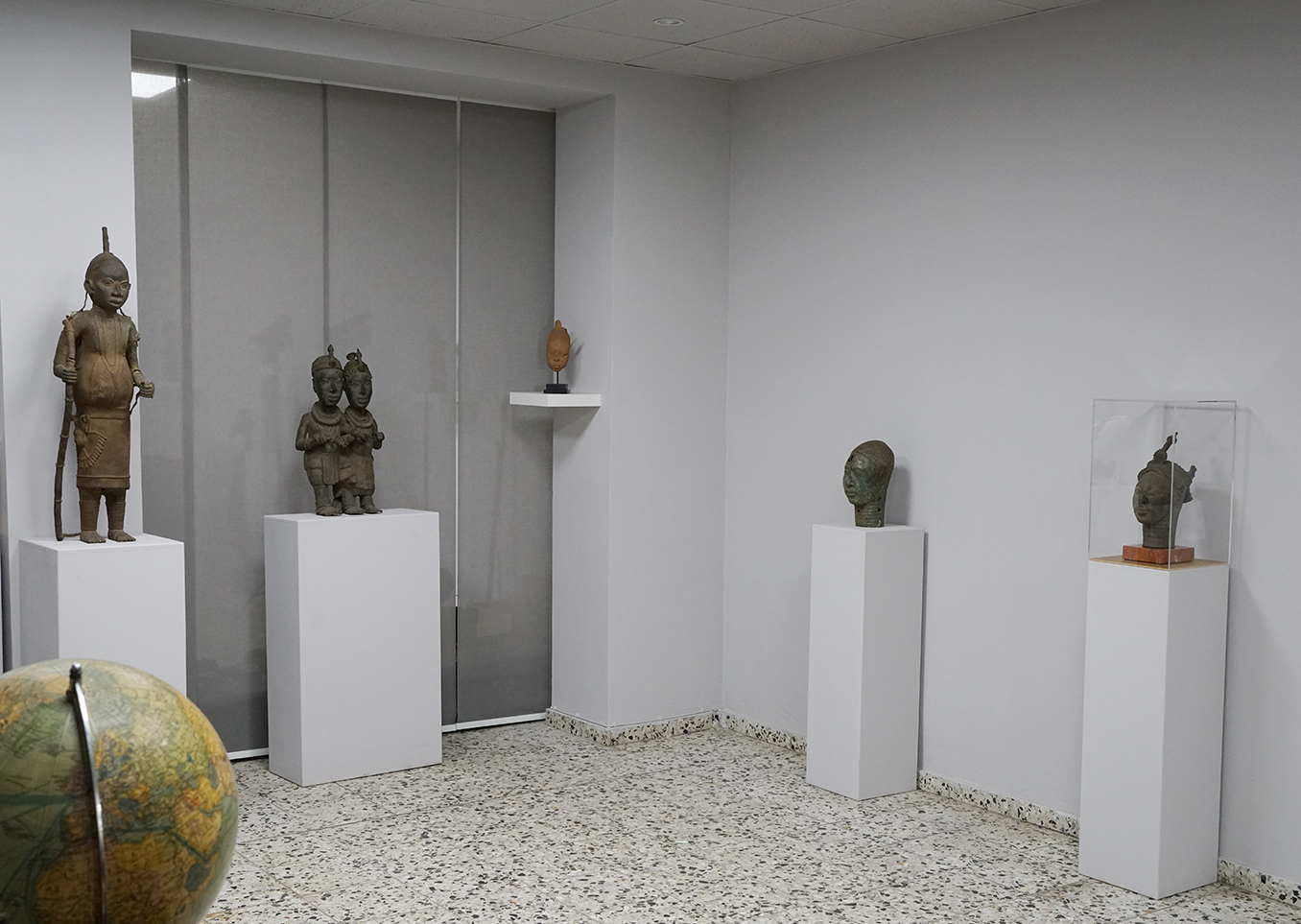
Ife- and Benin Ausstellung Wolfgang Jaenicke Gallery 2019.
In contrast, the art of the Yoruba metropolis of Ife is distinguished by its extraordinary naturalistic portrayal of portraits and figures in bronze, terracotta, and stone. These works, dating mainly from the 12th to the 15th centuries, are considered iconic examples of advanced naturalistic sculpture in pre-colonial Africa. Art historical research suggests that Ife art exerted a significant influence on the development of Benin bronze art, supported by oral traditions recounting the invitation of Ife artists to the court of the Benin Oba.
Comparatively, Ife art is characterized by a high degree of naturalism, while classical Benin art appears more formalized and stylized. The Udo style occupies an intermediate position in this spectrum, highlighting naturalistic elements more prominently than the courtly Benin art but without fully adopting the naturalism seen in Ife works.
Materially, Ife utilized bronze, terracotta, and stone, whereas Benin art primarily employed bronze and ivory. The Udo style mainly involves bronze works. Chronologically, Ife art is placed largely between the 12th and 15th centuries, classical Benin art between the 14th and 19th centuries, and the Udo style primarily in the 15th to 16th centuries.
In summary, the Udo style holds an important art historical position as a regional variant within the Benin Kingdom that simultaneously reflects the influence of Ife’s naturalistic tradition on the development of Benin art. It highlights the artistic diversity and dynamic cultural interactions among different centers in pre-colonial West Africa.
Height: 53 cm
Weight: 10,3 kg




















